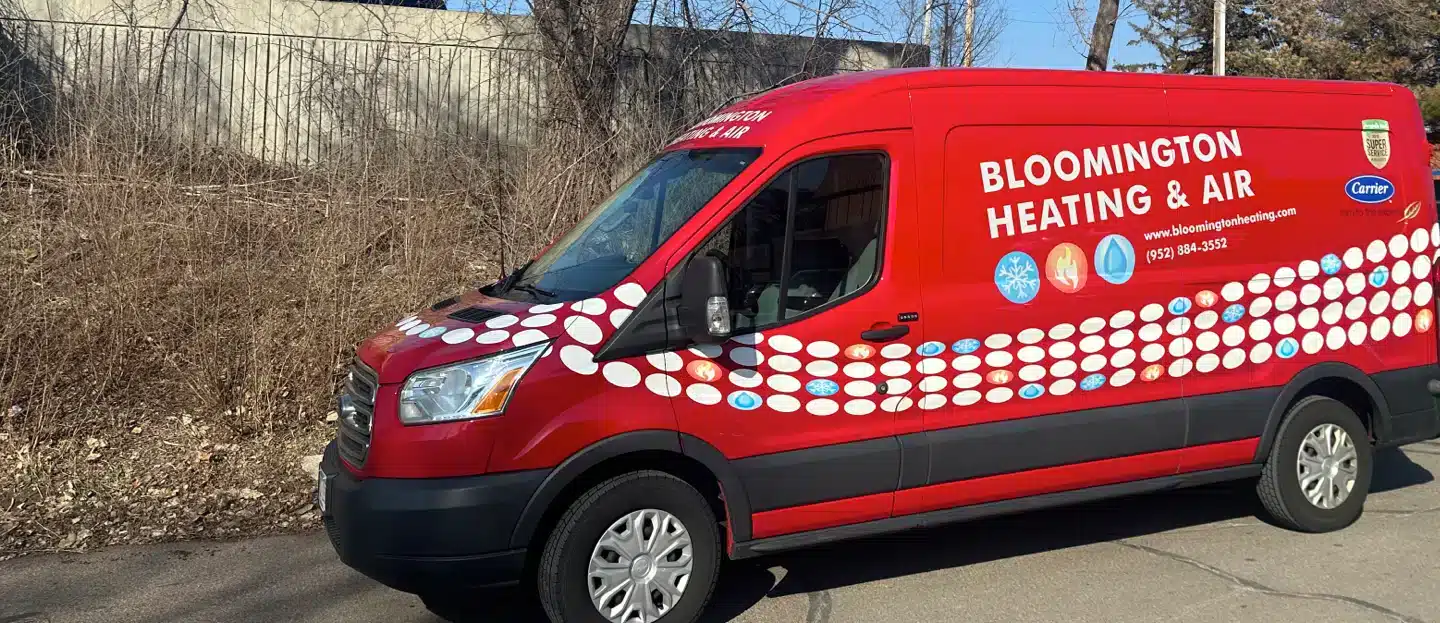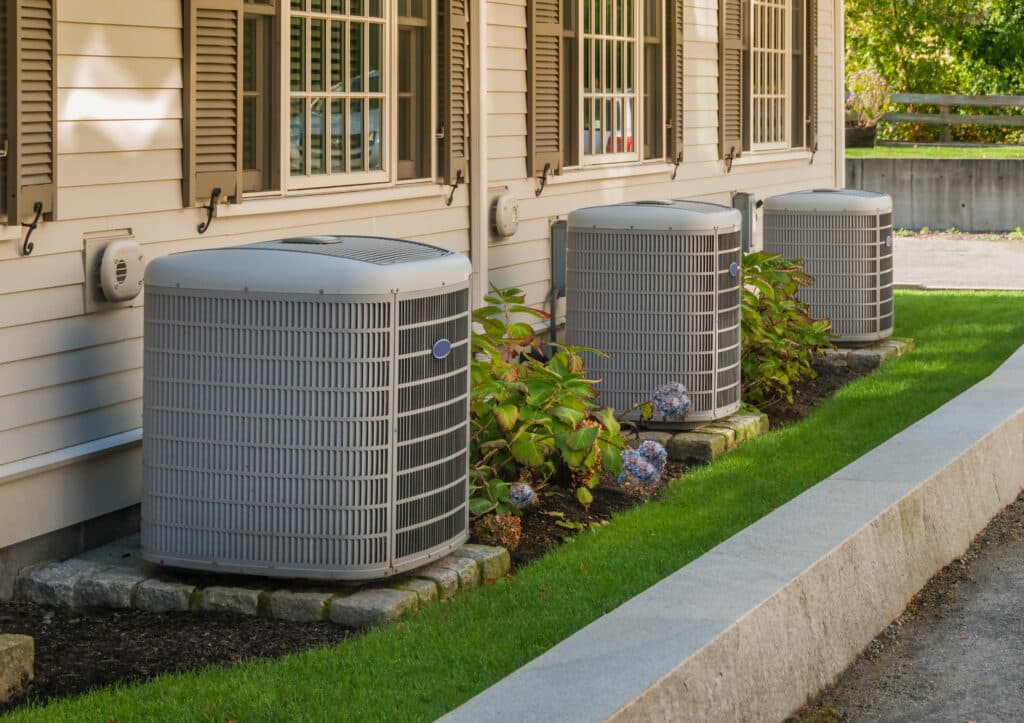
24/7 Emergency Phone Line
Family Owned & Operated
Licensed, Bonded & Insured
An HVAC system that works efficiently is something homeowners need to live comfortably. When operating correctly, many don’t worry about their home’s heating and cooling systems. But, when problems do arise, it’s crucial to have a basic understanding of your HVAC system, including the following eight parts. To help you diagnose any issues, seek the help of an experienced HVAC specialist.
At Bloomington Heating & Air, our team of HVAC technicians can help homeowners in their time of need and provide quick and effective heating and AC repairs.
Contact our HVAC company today to schedule air conditioning and heating repairs or to learn more about our wide range of HVAC services.
Thermostat
Thermostats are typically the most used and recognizable part of your HVAC system. Usually on a wall that’s easy to access, thermostats can be programmed in advance or set manually to keep the home at the desired temperature. When the ambient temperature becomes too cold or too hot, the thermostat will trigger the heat exchanger or the evaporator coil-condensing unit combo to begin circulating warmed or cooled air.
Furnace
The key part of your HVAC system, the furnace is also the largest and usually found in the basement, cellar, attic, or special closet designed just for it. Furnaces heat air distributed to various rooms of your home via the HVAC. This heating process is accomplished using one of four possible heat sources — combustion (burning natural gas, oil, coal, or propane), electric resistance, heat pump, or solar energy collected on site.
Condensing Unit
The condensing unit is located outside your home and condenses refrigerant gas to generate cold air in the summer. With winter in full swing, you may not use the condensing unit as much, but it’s important to pay attention to this exterior part of your HVAC system throughout the year. Falling leaves can create a buildup of debris around the condensing unit that will diminish efficiency during any remaining warm days this year, as well as the spring and summer seasons of next year.

Evaporator Coil
The evaporator coil acts opposite to the heat exchanger; it cools the air when your thermostat is set to lower temperatures in summer. Located in a metal enclosure on the furnace’s exterior, to the top or side, the evaporator coil works similarly to an automobile radiator to produce cool air, which is circulated through the ductwork.
Heat Exchanger
The heat exchanger is found inside your furnace. This component switches on when the furnace is activated by the thermostat to produce warmer temperatures in the winter. The heat exchanger pulls in cool air, heats it, and circulates the resulting heated air via your ducts and out through the vents.
Refrigerant Lines
The refrigerant lines carry a refrigerant substance to the condensing unit vaporized in the form of a gas, and return it to the evaporator coil in liquid form. These “lines” are actually narrow tubes manufactured from a durable heat- and cold-resistant metal such as copper or aluminum. If this is broken, contact our HVAC professionals for air conditioning repairs.
Vents
The vents transfer the heated or cooled air from the duct system into the rooms of your home. Made of high- and low-temperature safe metal, the vents are located on or near the ceiling and are usually fronted with angled slats (“vents”). These vents direct the treated air downward into the room. Often they might be manually controlled or even closed to control the amount of heated or cooled air in a room.
Ductwork
Ductwork refers to the system of ducts that transports warmed or cooled air by the system to the various areas of your home. Ducts are commonly made of lightweight aluminum; however, they may also be manufactured from steel, flexible plastic, polyurethane, fiberglass, or fabric. Sometimes, ducts begin to leak, leading to energy loss. It’s crucial to have regular planned maintenance by our HVAC team to keep it in the best condition possible.
n, MN 55420
